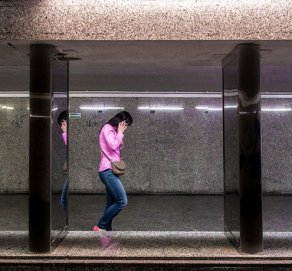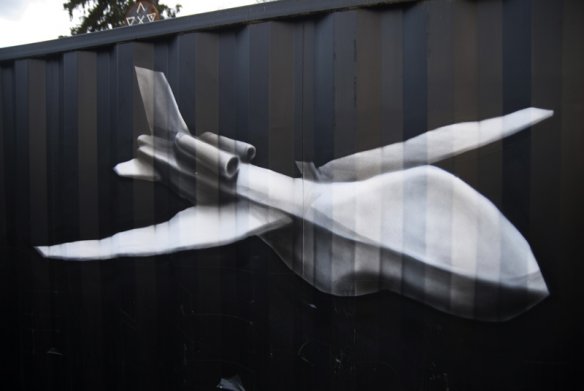President Salva Kiir signed the IGAD+ peace agreement 26 August 2015. For further information see a collection of news articles below from various media outlets commenting on the event: International Media: Al Jazeera: ‘South Sudan president signs peace deal with rebels.’ New York Times: ‘South Sudan’s President Signs Peace Deal With Rebels.’ The Guardian: ‘South Sudan’s President… Read more »
Cracking the Glass Ceiling: Hillary Rodham Clinton and U.S. presidential politics
In a now legendary 2008 Saturday Night Live skit, comedians Amy Poehler and Tina Fey opened the show by imitating Republican vice presidential candidate Sarah Palin and unsuccessful Democratic contender for the nomination Hillary Clinton, respectively. The skit could have been a harmless imitation game, with Fey and Poehler simply doing their brilliant impressions of each candidate’s personalities. Instead, it was an extended comment by two female comedians on what they saw as the unacceptable sexism in the 2008 campaign. As Fey wrote in her memoirs Bossypants:
“This sketch easily could have been a dumb catfight between two female candidates. What Seth [Meyers] and Amy [Poehler] wrote, however, was two women speaking out together against sexism in the campaign… you all watched a sketch about feminism and you didn’t even realize it because of all the jokes. […] Suckers!” (2012: 216-17)
That the 2008 presidential cycle was “rife with overt [gender] bias,” as political scientist Jennifer Lawless has written should not be a controversial claim (2009: 71). If you think it is, then I invite you to have a look at this rather shocking compilation of TV clips that the Women’s Media Center made in 2008. The compilation shows established TV news anchors focusing on Hillary Clinton’s clothes, hair and style rather than on her position on the issues.

A caricature of Democratic presidential candidate Hillary Rodham Clinton. PHOTO: CC/Flickr
Return Migration: Pakistan as a Return Migration Destination

Karachi Airport. Photo: Moin via Flickr.
Return migration to Pakistan is diverse. It ranges from return mobilities of naturalized citizens and those born abroad to so-called ‘voluntary assisted returns’ and deportations of migrants without regular status. Pakistan receives returnees from the Middle East, as well as from Europe and North America, which reflects broader Pakistani migration patterns. This policy brief explores the multiplicity of return migration to Pakistan. From a return destination perspective, it presents some of the dilemmas faced when governing return migration.
- Return migration to Pakistan is extremely diverse; legal status and citizenship are important distinctions among returnees.
- Pakistanis abroad account for about 4 per cent of the total Pakistani population of 185 million. Most migrate to the Middle East. Remit-tances are key to migration’s salience as a societal concern in Pakistan.
- Pakistan as a return destination is characterized by instability and socioeconomic stagnation but also future potential.
- The governing of return migration to Pakistan is complicated by the multiplicity of return.
… Read more in a recent Policy Brief from the project ‘Possibilities and Realities of Return Migration’ (PREMIG)
Return Migration: Polish Migrants to Norway
How do Polish Migrants in Norway Consider Return Migration?

Metro in Warsaw. Photo: Giuseppe Milo, via Flickr
After Poland’s accession to the European Union in 2004 and the substantial emigration that followed, return migration was an expectation widely shared by observers in Poland and abroad. Return migration has been modest, however, even in the wake of the 2008-2009 financial crisis. Due to the post-accession migration wave, Poles comprise the largest immigrant group in Norway. Although Polish migrants in Norway were also expected to stay for short periods of time, they are for the most part not returning to Poland. This Policy Brief explores why, presenting five common perspectives on return migration among Poles in Norway.
- A majority of recent Polish migrants is not returning to Poland any time soon.
- A segment of Polish migrants sustains mobility over time, working in Norway but living in Poland.
- As of 2015, males make up two thirds of Polish migrants in Norway despite the increasing settlement of families.
- Return considerations have changed rapidly, with many migrants postponing return indefinitely and focusing on settlement.
- Not all Polish migrants want to settle permanently; return migration and onward mobility remain as alternatives.
… Read more in a recent Policy Brief from the project ‘Possibilities and Realities of Return Migration’ (PREMIG)
See also: Return Migration: Pakistan as a Return Migration Destination
This Week in South Sudan – Week 34
Monday 17 August President Salva Kiir did not sign the Proposed IGAD+ peace deal in Addis Ababa, requesting a further 15 days for ‘consultations.’ President Salva Kiir made indirect death threats towards journalists ‘working against the country.’ A large force of military police was deployed around the residence of Clement Wani Konga, the recently dismissed… Read more »
This Week in South Sudan – Week 33
Monday 10 August South Sudanese rival forces traded accusations over who initiated recent clashes in Pariang county, Unity state over the weekend. Ethiopia’s prime minister, Hailemariam Desalegn travelled to Uganda to attend the Inter-Governmental Authority on Development summit on South Sudan. Riek Machar downplayed the rumoured possibility of disintegration within the SPLM/A (IO)’s leadership. Sudan’s… Read more »
The “Sunnification” of Turkey´s Foreign Policy
Two months is a long time in politics – even more so in Turkish politics. At the beginning of June, the Turkish election brought a wave of hope across the country with results that broke the majoritarian (and authoritarian) rule of the reigning Justice and Development Party (AKP). The pro-Kurdish People´s Democratic Party (HDP), winning 13% of the vote, managed to cross the 10% threshold so gaining representation in mainstream politics for Kurds – as well as liberals desperate for a new democratic force in Turkey´s staid political landscape. It was a political victory that promised a continued normalization in Turkish-Kurdish relations and an opportunity to reinvigorate the stalled peace process of 2012. With cautious optimism (and a solid dose of apprehension), Turks anticipated a long hot summer of political wrangling in the search for a coalition government. However, when a young Kurdish ISIS supporter exploded a bomb in the Turkish border town of Suruç on the 20th of July killing 32 young activists and injuring many more, the summer suddenly became hotter than anticipated.

PHOTO: Ozcan Soysal/AP Photo
Oh my, not another ‘Festschrift’!
Eight years ago, I wrote a short piece for a Norwegian science policy journal lampooning the Festschrift as an outmoded form of academic communication. The Festschrift, I can hear some of my non-Scandinavian readers ask: Are such volumes still being published?
Surprisingly, the answer is yes. Of course, it is largely a self-financing enterprise. In signing up for the Tabula gratulatoria, friends of the honoree promise to fork out a few hundred kroner for a book they are often unlikely to read. A book filled with articles that are generally not quite important enough to be published in academic journals (or, even when they are important, are doomed to oblivion because they are in the wrong outlet). Of course, any Festschrift editor would like to think that his or her project is different. In 1980, I edited a Festschrift in honor of Johan Galtung on the occasion of his 50th birthday. The core of the publication was a list of 667 published and unpublished items that the author had written over the years. I would like to think it was a useful project at the time. In the age of electronic publication, such a task might still be worth undertaking, but probably not to publish as a book.

PHOTO: Creative Commons 2.0.
Why then does the tradition survive? Well, it’s a nice gesture to edit a book (or contribute to one) in honor of a friend. The element of surprise adds a measure of excitement to the project. In a country brimming with oil money, we can probably afford to continue this tradition. In my article, I nevertheless offered an alternative explanation for the survival of the Festschrift: If you announce publicly that you think the Festschrift is outdated, you are put in an embarrassing position if you get one yourself. And if you don’t get one, you risk ridicule – did you really think that anyone would take on such a project for you? I took the risk and said ‘no thanks’ in public, and this has been respected by my colleagues (if they ever had such an idea in the first place). I hasten to add that I have contributed to various Festschriften for others, and of course to numerous Tabulae gratulatoriae.
But, of course, I am not immune to flattery. So when my energetic friend and colleague Hans Günter Brauch, who doesn’t ever take ‘no’ for an answer, invited me to submit a volume to his ‘Pioneers’ series published by Springer, I yielded. So now I have a kind of Festschrift edited entirely by myself! PRIO and the Gløbius foundation have joined forces to purchase open access. You can read it here. And if you have room for another hard-copy book in your collection, it comes at a reasonable price, thanks to the open access option. Enjoy! (Or ignore!)
Lethal Autonomous Weapons: Killing the ‘Robots-don’t-Rape’ Argument
Earlier this spring, we debated a law professor who insisted that lethal autonomous weapons (LAWS) could clean up war. The professor posited that a war fought with autonomous weapons would be a war without rape. Taking humans out of the loop would, the argument goes, lead to more humane war. We find this narrative, where technological innovation is equated with human progress based on the assumption that it will end the occurrence of rape in war, highly problematic. We have since reflected on what this ‘progress narrative’ is about and how we as a scholars should approach this type of narrative, particularly as it is gaining traction as part of the wider set of arguments regularly employed by actors promoting the use of lethal autonomous weapons (see report by Christof Heyns, Special Rapporteur on extrajudicial, summary or arbitrary executions).

A graffiti artist’s impression of a military drone. Photo: CC/Thierry Ehrmann.
Thus, in thinking critically about the nature of the progress narrative of which the ‘Robots don’t rape’ argument is part, we make three observations:
PRIO Global Fellow, Luka Biong Deng: ‘Will IGAD Plus deadline have the same fate of IGAD deadlines?’
The IGAD Plus agreed in its first meeting on a document titled “Proposed Compromise Peace Agreement for the Resolution of the Conflict in the Republic of South Sudan” and resolved to share it with the warring parties and other stakeholders as the basis for the next round of peace talks. Besides this document, IGAD Plus… Read more »